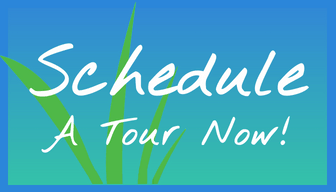by Karen Ball
I feel fortunate – fortunate because I am not one of the 45 million Americans that experience chronic headaches.[i] For that matter, I barely make the club of nearly 90% of the population that experiences occasional headache pain.[ii]
So, let’s get this straight – a headache is not a disease. It is the loud and persistent and painful voice of a body living with chronic stress, toxic blood, physiological imbalances and/or trauma: ie. a body crying out for help. It turns out that there are many bodies crying out for help in the United States: People seeking treatment for headache pain account for 8 million consultations with physicians annually.[iii] Migraine headaches alone account for an estimated 157 million days lost from work.[iv]
Cephalgia (a headache) is defined as pain in the head and/or neck, and is classified as either episodic or chronic. Episodic headaches are triggered by a specific episode of stress; chronic headaches are frequent or even daily, associated with ongoing stress.
Headaches are categorized according to their symptoms, the area of the head that is afflicted, the frequency and intensity of the episode. The International Headache Society lists 200 causes of headaches. They separate the causes into three main categories: Primary, Secondary and Cranial Neuralgia/Primary Facial Pain/Other.
The United States National Institute of Neurological Disorders and Stroke (part of the National Institutes of Health) simplified the IHS list into Primary and Secondary headaches, by incorporating the neuralgia and facial headaches into one or the other two (mostly Primary). To make matters worse, many people experience more than one type of headache.
Primary Headache Pain
Primary headache disorders are said to occur independently, in that they result from changes in blood vessels, nerves and muscles, not as a secondary response to disease or injury. The most familiar primary headaches are associated with stress: migraine, cluster, and tension. A rebound or MOH (Medication Overuse Headache) is considered primary. Massage therapy and reflexology are very effective approaches to stress-related headaches, because both modalities will help restore optimal circulation and relax both muscular and nervous tissue.
Secondary Headache Pain
Secondary headaches are actually symptoms of underlying disorders or diseases, such as high blood pressure, injury, dental infections, earaches, sinus infections, psychiatric problems, chronic constipation, hormonal imbalance etc. Pain is the body’s way of communicating that something needs attention. This is the area in which reflexology can be very helpful, since reflexology works to support the health and functionality of the body’s organs and systems.
Cranial Neuralgia/Primary Facial Pain/Other
The causes of these headaches are many times idiopathic and affect the nerves that enervate the face and head. The trigeminal nerve (CN-V) and the glossopharyngeal nerve (CN-XII) are often implicated. Neuralgia is nerve pain occurring without stimulation of the nociceptors (pain receptor cells). A cold temperature stimulus (such as eating ice cream or being in an extremely cold environment) can act as a trigger.
I was shocked when I first learned the above stats, and decided that I wanted to reach out to people in my community who were sick and tired of living with headaches, and who preferred to do something other than take drugs that were only masking their pain. In other words, people who were ready to take charge.
I created a community class that helped people identify what triggered their headaches (from a list of over 60 possible causes) and what type of headache they suffered from. Without this knowledge, it is very difficult to design a targeted session of reflexology and massage protocols and/or to establish lifestyle changes to bring about lasting results.
I realized that I could actually help more people if I made this class available to licensed bodyworkers, who could in turn provide either one-on-one coaching or lead small classes themselves in their communities. Thus was born the 1-day, Say Goodbye to Headaches continuing education class.
Please join me at FSM on Saturday, May 10th for Say Goodbye to Headaches. You will learn how to transform the lives of people living with head pain, and transform a sluggish practice into a thriving, focused business. In addition to designing individualized hands-on session protocols utilizing reflexology, massage, hydro and aromatherapy, you will leave with the materials and skills needed to coach one-on-one or offer small classes in your community to those people who are sick and tired of living with headaches.




